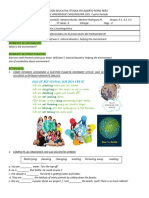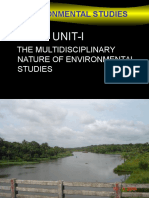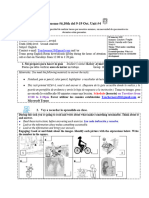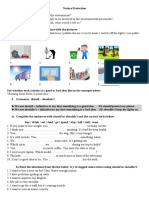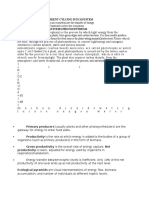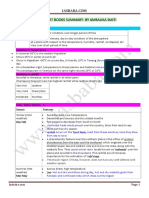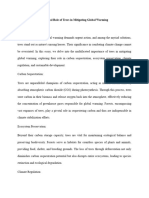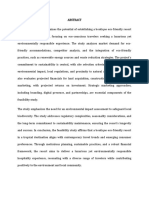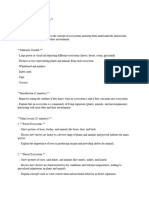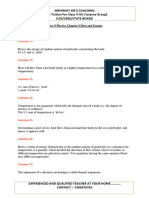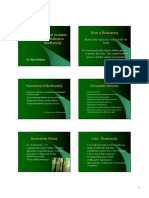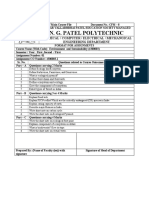TAKE ACTION
Unit 3 Lesson 1
AGENDA
1.) Our home
2.) Skim and scan review
3.) Virtual field trip: Recycling Centre
1
� VOCABULARY
ecosystem (n) area where living things exist, as well as the physical environment
organism (n) individual form of life, such as a plant, animal, bacteria, or fungus
bacteria (n) simple microscopic organism that lives on surfaces but is invisible to the human eye
biodiversity (n) the existence of a large number of different kinds of plants and animals
fascinating (adj) extremely interesting
campaign (n) actions or activities that are meant to achieve a particular goal, like advertising a
product or promoting a person for an election
to generate (v) to produce or create
to incinerate (v) to destroy something by burning it
dioxin (n) chemical that is caused by environmental pollution that is often poisonous
compost (n) mixture of old food and dead leaves that is used to help garden soil grow better plants
VOCABULARY
A) biodiversity (n) 1) extremely interesting
B) to generate (v) 2) individual form of life, such as a plant, animal, bacteria, or fungus
C) organism (n) 3) to produce or create
D) dioxin (n) 4) to destroy something by burning it
E) campaign (n) 5) the existence of a large number of different kinds of plants and animals
F) compost (n) 6) chemical that is caused by environmental pollution that is often poisonous
G) ecosystem (n) 7) area where living things exist, as well as the physical environment
H) fascinating (adj) 8) mixture of old food and dead leaves that is used to help garden soil grow better
plants
I) to incinerate (v) 9) simple microscopic organism that lives on surfaces but is invisible to the human eye
J) bacteria (n) 10) actions or activities that are meant to achieve a particular goal, like advertising a
product or promoting a person for an election
2
� VOCABULARY
1) H
2) C
3) B
4) I
5) A
6) D
7) G
8) F
9) J
10) E
THINK, PAIR, SHARE
• Where can a person go to breathe really fresh air?
• How important is nature to you? Do you try to get close
to nature?
• Describe the most natural environment for a human
being. Does your description match the environment
you live in?
3
� WHAT IS AN
ENVIRONMENT?
WHAT IS AN ENVIRONMENT?
An environment is anything that surrounds us! Our environment right now is
our classroom.
4
� WHAT IS AN
ECOSYSTEM?
ECOSYSTEMS OF VIETNAM
WETLANDS FORESTS
5
�ECOSYSTEMS OF VIETNAM
CORAL GRASSLANDS
REEFS
ECOSYSTEMS OF VIETNAM
DESERTS MOUNTAINS
6
�ECOSYSTEMS OF VIETNAM
FARM CITIES
LANDS
WHAT IS AN ECOSYSTEM?
It is a home where organisms can live together in a
community.
A living thing (big or small).
It could be an animal, plant, fungus, or
bacteria.
Without them, we would not be able to stay alive.
Ecosystems give us clean water, fresh air, and all of our
food.
7
� ECOSYSTEMS OF VIETNAM
Scientists believe that Vietnam is home to more
than 20 different kinds of ecosystems!
In fact, Vietnam is one of the most bio-diverse
countries on Earth. There is a huge variety of
fascinating wildlife and beautiful landscapes.
OUR HOME
Ho Chi Minh City is our home.
It is our environment and our
ecosystem.
Our unit is all about taking
action to care for our planet,
and we are going to start with
our home here in Vietnam.
8
� ENVIRONMENTAL ISSUES
Unfortunately, our planet has
been facing serious effects from
harmful environmental activities.
• What do you think these
harmful activities are?
• Can you think of some
examples here in Vietnam?
ENVIRONMENTAL ISSUES
Let's look at some examples of
the serious effects these
activities have on our planet.
They happen all around the
world, but they also occur here
at home in Vietnam.
9
�NATURAL DISASTERS
POLLUTION
10
�DEFORESTATION
LOSS OF WILDLIFE
And many others...
11
� CLIMATE CHANGE
In addition to all of this,
our planet is heating up!
With all of these issues
happening right outside
our door, it's easy to
become overwhelmed
with what to do next.
CLIMATE CHANGE
In addition to all of this,
our planet is heating up!
With all of these issues
happening right outside
our door, it's easy to
become overwhelmed
with what to do next.
But what if we did nothing?
12
� FLASH WRITE!
Imagine it's the year 2805.
Predict what our planet would be like if we did NOTHING to
help climate change. Use sensory language to describe it.
What would it look, sound, smell, touch, or taste like?
Write for 5 minutes
LET'S WATCH A CLIP
We are going to watch a
short clip from the Disney
Pixar movie, Wall-E.
This movie takes place in
the same year you made
your prediction about.
13
� LET'S WATCH A CLIP
• Did the clip describe the
scenery you wrote in your
notebook?
• How was it the same and
how was it different?
• Do you think it's too late
for our planet?
IT'S NOT TOO LATE
Scientists believe that it isn't
too late for us to avoid
some of the worst effects of
climate change.
It's time to take action and
the best place to start with
is our home.
14
�THE THREE Rs
One of the easiest ways to
begin is with the three Rs:
Reduce
Reuse
Recycle
REDUCE
Be careful with how much
you are using:
• switching from grocery
bags to reusable bags
• print on both sides of
the paper
• use Tupperware
containers instead of
ziplock bags
15
� REUSE
Learn to re-purpose items
instead of throwing them
away:
• jars
• boxes
• clothes
• refilling a water bottle
RECYCLE
Properly sort and dispose
of your rubbish:
• paper
• plastic
• glass
• aluminum
16
� READING
Let's take a look at a web
page from the Recycling
Guide website.
This is a national campaign
that encourages us to
recycle our rubbish and
help the environment.
Textbook page 136 activity 1
1.) Look at the features listed in the
box that the website designer has
used to attract the reader and
organise the information.
Match the features to the numbered
arrows on the website.
Textbook page 136 activity 1
17
� Answers:
A3
B2
C1
D4
E5
Textbook page 136 activity 1
READING QUESTIONS
1.) The title of the website
tells us what?
A) The owner of the company
B) the audience of the website
C) the purpose of the website
D) nothing
Textbook page 136 activity 1
18
� READING QUESTIONS
1.) The title of the website
tells us what?
A) The owner of the company
B) the audience of the website
C) the purpose of the website
D) nothing
Textbook page 136 activity 1
READING QUESTIONS
2.) Why does the heading use the imperative
verbs 'reduce, reuse, recycle'?
A) to tell the reader what to do
B) to encourage the reader to take action
C) to complain about pollution
D) only A and B
Textbook page 136 activity 1
19
� READING QUESTIONS
2.) Why does the heading use the imperative
verbs 'reduce, reuse, recycle'?
A) to tell the reader what to do
B) to encourage the reader to take action
C) to complain about pollution
D) only A and B
Textbook page 136 activity 1
MATCHING ACTIVITY
1 2 3
make the website allow easy access to other help organise the
more eye catching pages on the website information visually
A B C
links to other pages images coloured text boxes
20
� MATCHING ACTIVITY
1 2 3
make the website allow easy access to other help organise the
more eye catching pages on the website information visually
A B C
links to other pages images coloured text boxes
SKIM &
SCAN
Do you remember
this from last year?
21
� SCANNING
This helps you find key
information quickly. To use
this, you look for the answer
while ignoring all of the
unrelated information that's
left on the page.
SCANNING
Before you start, make sure
you ask yourself these
questions:
• What is the question
asking?
• What does the answer look
like?
22
� SKIMMING
When you skim a text, you
are reading only to find
the main ideas and
understand what they
mean.
How do you skim a text?
SKIMMING
• Read the first sentence of each
paragraph
• Read the first and last paragraph
• Read all of the headings and sub-
headings
• Read bold or italicized words
23
�QUICK, WHAT'S THE DIFFERENCE?
What are we looking for?
SCANNING SKIMMING
QUICK, WHAT'S THE DIFFERENCE?
What are we looking for?
SCANNING SKIMMING
We are looking for We are looking for the main
keywords ideas
24
� READING
There are lots of ways to
organise information.
We are going to look at a text
and answer the questions to
practise our information-
finding skills.
Textbook page 137 activity 3
READING
Text 1 is taken from a
leaflet to encourage
recycling.
Textbook page 137 activity 3
25
� Textbook page 137 activity 3
1.) Diagrams can give the READING
reader a lot of information.
Use this diagram to work
out:
a) The type of waste that
takes up the most space in
our bins.
b) One type of waste that
takes up the least space in
our bins.
26
� READING
1.) Diagrams can give the
reader a lot of information.
Use this diagram to work
out:
a) The type of waste that
takes up the most space in
our bins.
paper and card
READING
1.) Diagrams can give the
reader a lot of information.
Use this diagram to work
out:
b) One type of waste that
takes up the least space in
our bins.
plastics and metals
27
� READING
2.) Scan Text 1 to answer
these questions. Remember:
when scanning, identify a
key word in the question,
then scan the text to find
that word.
READING
2.)
a) How much of our waste is
put into landfill sites?
b) What is produced when
waste is incinerated?
c) What does landfill mean?
28
� READING
a) How much of our waste is
put into landfill sites? 74%
goes into landfill
b) What is produced when
waste is incinerated?
c) What does landfill mean?
READING
a) How much of our waste is
put into landfill sites? 74%
goes into landfill
b) What is produced when
waste is incinerated?
Smoke, ash, and dangerous
chemicals
c) What does landfill mean?
29
� READING
a) How much of our waste is
put into landfill sites? 74%
goes into landfill
b) What is produced when
waste is incinerated?
Smoke, ash, and dangerous
chemicals
c) What does landfill mean?
Place where people dump
their rubbish
VIRTUAL FIELD TRIP
When you put your
rubbish on the curb,
where does it go?
30
� VIRTUAL FIELD TRIP
Today we are going to go
on a virtual field trip!
Let's tour around the
inside of a recycling plant.
VIRTUAL FIELD TRIP
While we are watching, look for the answers to these questions:
1.) How many tonnes of material does the Kimble Company's recycling
centre process per year?
2.) How do the materials move through the centre?
3.) Why do they need to be sorted?
4.) What is one method the center uses to sort materials?
5.) What recycling tip does plant manager Kevin Eidens give us?
31
� VIRTUAL FIELD TRIP
1.) How many tonnes
of material does the
Kimble Company's
recycling centre
process per year?
VIRTUAL FIELD TRIP
1.) How many tonnes
of material does the
Kimble Company's
recycling centre
process per year?
100,000 tonnes
32
� VIRTUAL FIELD TRIP
2.) How do the
materials move
through the centre?
VIRTUAL FIELD TRIP
2.) How do the
materials move
through the centre?
conveyor belts
33
� VIRTUAL FIELD TRIP
3.) Why do they need
to be sorted?
VIRTUAL FIELD TRIP
3.) Why do they need
to be sorted?
They are going to be
recycled into different
things.
34
� VIRTUAL FIELD TRIP
4.) Write down at least
one method of sorting
used at the centre.
VIRTUAL FIELD TRIP
4.) Write down at least
one method of sorting
used at the centre.
magnet, laser, gravity
and people
35
� VIRTUAL FIELD TRIP
5.) What recycling tip
does plant manager
Kevin Eidens give us?
VIRTUAL FIELD TRIP
5.) What recycling tip
does plant manager
Kevin Eidens give us?
He reminds us to clean
materials before we
recycle them.
36
� TRASH TO TREASURE
Think about something
you threw out
yesterday. Could you
have turned it into
something new? It's
time to get creative!
TRASH TO TREASURE
DIRECTIONS:
• Think of something that you threw out yesterday.
• Make a list of as many things you could have turned it into.
• Pick ONE to draw a picture of.
• Write a short paragraph explaining how you would turn
that piece of trash into a treasure.
37
� VOCABULARY TASK
Complete the gaps in your WB with words from the list.
1. We started making ____ for our garden last year.
2. Cleaning products help us kill the bad ____ in our house.
3. The ____ of the jungle amazes me.
4. I saw a ____ movie last week.
5. The city built a new dam on the river to ____ more power.
VOCABULARY TASK
Complete the gaps in your WB with words from the list.
1. We started making compost for our garden last year.
2. Cleaning products help us kill the bad bacteria in our house.
3. The biodiversity of the jungle amazes me.
4. I saw a fascinating movie last week.
5. The city built a new dam on the river to generate more power.
38
� PLENARY
1.) What is the difference between skimming and
scanning?
2.) What do The Three Rs stand for?
3.) What are two materials that can be recycled?
39



